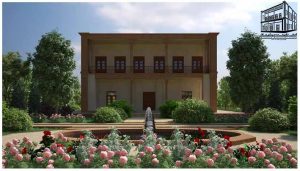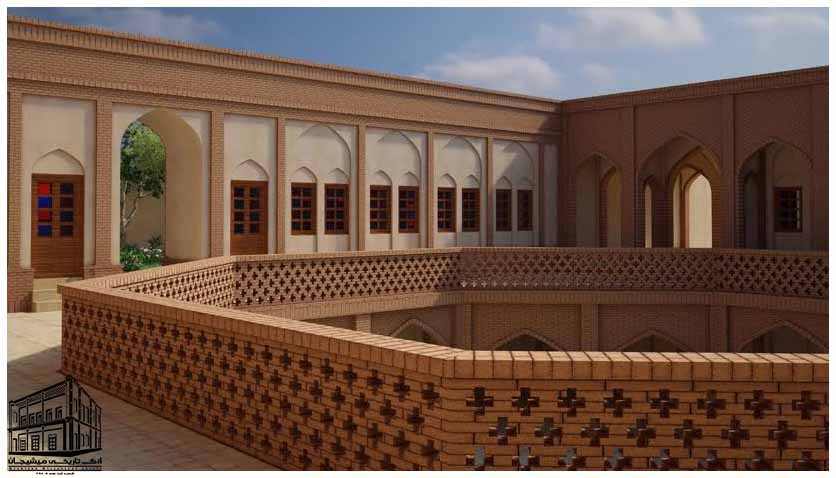Let us start in the name of God, the All-Knowing,
God The Maker, and the Powerful Living.
<pstyle=”text-align: justify;”>
Our honorable land, Iran, has always been the place for the manifestation of science, arts and culture, and the origin of great human civilizations. The relics of the lofty civilization of the Iranian folks are seen all over this traditional land. the remaining parts of the mysterious courts of Sassanid kings in Shiraz, the fictile buildings and the louvers in Yazd, the beautiful historical monuments in Isfahan and the tablets in Timareh of Khomein, the most ancient discovered tablets, each is a symbol of the elevated culture and the unparalleled arts by the diligent Iranian folks. Having accepted Islam with open arms, the Iranian architecture flourished. In fact, the post-Islamic architecture is another resplendency of Iranian art integrated with Islamic symbols, with its obvious sample as historical monuments in Isfahan, especially The Naghsh-e-Jahan square and its surrounding historical buildings.
Markazi province, also, with Arak as its center, includes numerous historical monuments. It has fostered many artists, scholars and politicians through the history. Located on the south of Markazi and 300Km of Tehran, Khomein County is particularly important. The Grand Ayatollah Khomeini, the founder of the Islamic Republic of Iran, was born in this county. His old house there is now a place of public visit. The most ancient known tablets in the world, the Timareh tablets are also in this county. These 22000 tablets are unique in the world in both number and size. The villages surrounding Khomein also have numerous historical monuments.
Mishijan Historical Castle
Moving in Khomein road towards Tehran, we arrive at Mishijan village passing 5Km. Most people are active in agriculture and animal husbandry at this village. In the recent decade, however, the agriculture lost its previous importance due to drought, and most people moved to nearby cities to make their living. The unemployment rate is unfortunately high at this village.
There is a historical monument here known as Bark among native village folks. It is a two-store building with 582 square meters of infrastructure and 10 meters of height at the center of a garden in the shape of a well-arranged octagon with about one hectare of space. Regarding the evidence and its architecture style, this building dates back to before the Qajar dynasty, about 400 years ago. Heshmat Khan the king, the proprietor of more than 150 neighboring villages to Mishijan, used this garden and the building as his summer resort and to resolve the agriculture-related affairs of the neighboring villages about a century ago. This place was then exchanged between some other proprietors after him. Azizollah Ebrahimi, the colonel, bought and upkept this monument in 1971-81. After his decease in 2009, however, this valuable monument was unfortunately left alone. It was subject to heavy damages due to lack of maintenance, the drought and some jobberies for discovering the treasuries and precious items. The upkeep and restoration of this monument was started in summer 2015 in an attempt by Mr.Panahi the engineer, coordinated by The Cultural Heritage Headquarters in Markazi and the Government of Khomein.
Purposes of the Restoration Plan for the Mishijan Historical Castle
Being himself born in Mishijan village, Mr. Panahi, has started this activity with a multiplied motivation due to his excessive interest in this village and its respected folk, regarding the importance of upkeeping and maintaining this memorable and historical monument, the valuable token of the ancestors.
In the restoration plan for the historical Mishijan castle, it is said that some rooms are to be established around the main garden for domestic and foreign tourist stands, in addition to restoring the building, the garden and its surrounding buildings, performed by the experienced architects preserving the main monument model, in an at most two-year period. All facilities in these rooms will be in a historic style where the tourists can experience the life in 100 years ago. A store for presenting the domestic commodities and a traditional restaurant will also be established.
Besides the main purpose of maintaining one of the valuable historical monuments of the region, the business prosperity in the village is also an important purpose. It is hoped that we can take an even short step forward towards the prosperity of our dear homeland, Iran.
Author: Ali Mohammad Panahi


